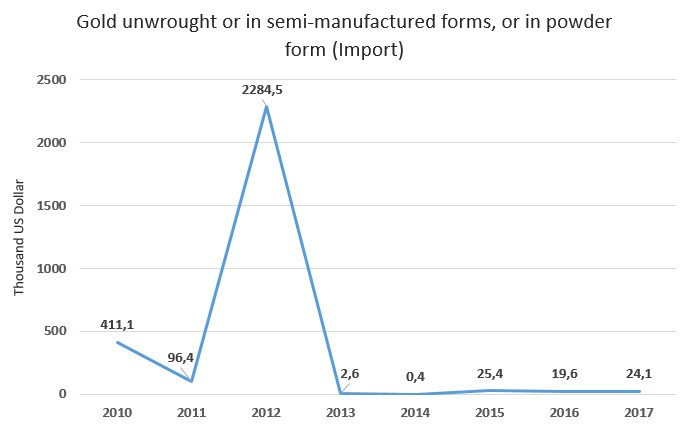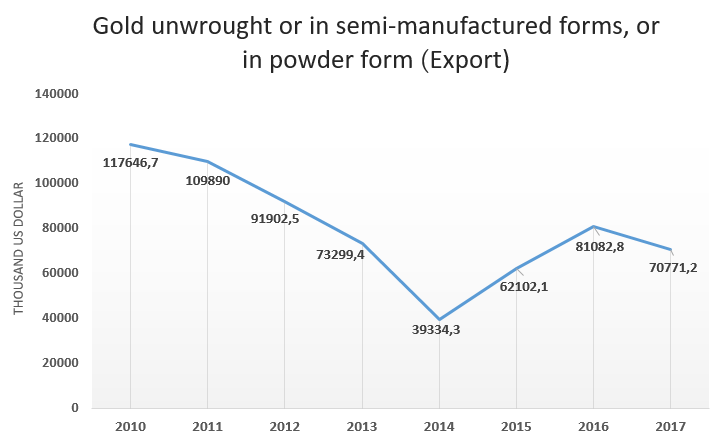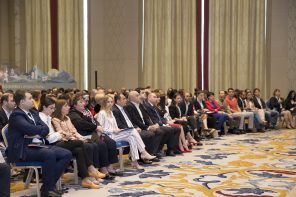Georgia is considered to be one of the oldest homelands of metal processing in the world. From the Copper-Bronze Age, when man acquired metal, it became the origin of the jewelry, especially the noble metals (gold and silver).
Examples of works by early Georgian goldsmiths were discovered during archaeological excavations, dating back to the 8th-6th centuries BCE, found on the territory of the ancient kingdom of Colkheti, known as Colchis. Burial mounds of ancient nobles on the sites of Vani and Sairkhe explain why Colkheti was referred to as Golden Fleece land, along with Mikena, Sardi, and Babylon in Greco-Roman sources.
Nowadays, Georgia is still rich in gold and this fact is reflected in high volume of export. During the last 7 years, Georgia has exported gold of USD 639, 923 500 64 and in 2017 price of exported gold was USD 64,656 600. This product is the 10th in the top export list of Georgia.
There are the couple of ores in the country, where gold can be mined: Madneuili, small town Kazreti and Ieli village Svaneti. Rich Metals Group (RMG) is the one of the largest enterprises in Georgia and Caucasus region, engaged in mining activities in Bolnisi region, Georgia. JSC RMG Copper and LTD RMG Gold produce the copper concentrate and gold Dore alloys (half-fabricates) by mining and processing copper and gold containing ores. Currently, about 3000 employees work at the company, 90% of whom are local residents.


Chart illustrates rates of exported gold (unwrought, semi-manufactured, in powder form) from Georgia, between 2010 and 2017. Units are presented in thousand US dollars.
The rate of export fluctuated, where the highest rates are shown in 2010 (about 117,647). In this period, gold export rates fell dramatically, up to 39,334. In 2015, rates improved slightly and reached almost 81,083. Unfortunately, in 2017 gold export decreased up to 700,771.
Overall gold import rate reached the peak in 2012 at a level 2,285, which fell dramatically in 2013(2.6) and remained stable until 2017 (24.1).





